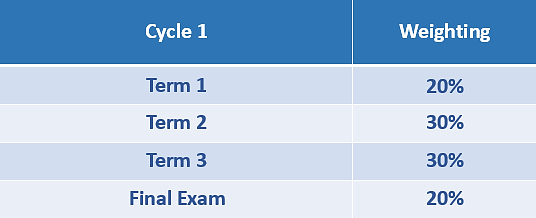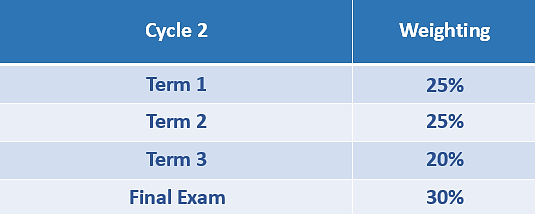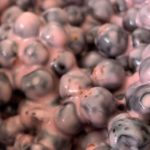Welcome to Kativik Ilisarniliriniq’s Secondary Science Programs. Here, you will find all the necessary information and resources for science programs in Nunavik.
1. Basics of the KI Programs
1.1 KI Secondary Cycles and Rotations
At Kativik Ilisarniliriniq, we have 6 grade levels in secondary; 3 levels in Cycle 1 and 3 levels in Cycle 2.

Table of Contents
- Basics of the KI Programs
1.1 KI Secondary Cycles and Rotations
1.2 Overview of Programs
1.3 Teacher Support - Core KI Materials for 2023-24
2.1 Materials Overview
2.2 Access to Materials - Evaluation & Credits
3.1 Competencies & Terms Weight
3.2 Cycle 2 Credits
3.3 Term by Term - Resources
4.1 Useful Links
4.2 Resources on Nunavik IcE
The KI secondary Science programs are structured in a 3-year rotational system of Blocks for each cycle, as explained in the video below.
1.2 Overview of Programs
The following videos describe the programs, content and the materials provided for the Cycles 1 and 2 science rotational programs. The content of these videos is also available for you to download as a PowerPoint document, allowing you to review or take notes.
Introduction to Block B
Introduction to Block F
1.3 Teacher Support
Your Secondary Math and Science Educational Consultants are available to support you by telephone, email or ZOOM for any questions regarding programs, educational or organizational issues or simply adapting to living in Nunavik. We provide in-person visits to your school at least once per year as well as ZOOM workshops or “drop-ins” or meeting by telephone.
Susan Nelson
T 819 964-1136 ext. 216
T 1 877 964-1136
F 819 964-1141
@ susan.nelson@kativik.qc.ca
Do not hesitate to ask your principal for support from your Ped Counsellors. This is a service that we are honoured to provide that assures that every teacher has the support they need to do the best job possible.
2. Core KI Materials for 2023-24
Levels 1.0, 1.1 and 1.2 of the KI Cycle 1 and levels 2.1, 2.2 and 2.3 of the KI Cycle 2 Secondary Science programs each work on a three-year rotational Block system. It means the materials to use change each year, before repeating after the third year. This section presents the materials to be used for the 2023-2024 school year.
2.1 Materials Overview
The following videos explain how to use the teaching materials for the Cycles 1 and 2 science programs. The content of these videos is also available for you to download as a PowerPoint document, allowing you to review or take notes.
Cycle 1
The following videos describe the pedagogical materials provided for the programs. The content of these videos is also available for you to download as a PowerPoint document, allowing you to review or take notes.
Student Books
Teacher Guides and Evaluation
The following offers a preview of the student books for Block C of the Cycle 1 science course.
BLOCK B
As a KI teacher, you can access these materials online in the Learning Materials folder or in your school using DBServer. See the Access to Materials section for more info.
Cycle 2
The following videos describe the pedagogical materials you will have to teach the programs. The content of these videos is also available for you to download as a PowerPoint document, allowing you to review or take notes.
Student Books
Teacher Guides and Evaluation
The following offers a preview of the student books for Block F of the Cycle 2 science course.
BLOCK F
As a KI teacher, you can access these materials online in the Learning Materials folder or in your school using DBServer. See the Access to Materials section for more info.
2.2 Access to Materials
Printed Materials
All student books and teacher guides for both Cycle 1 and Cycle 2 should already have been ordered before the end of the previous school year and should be available in your class or the school.
Cycle 1 and Cycle 2 student books and teacher guides are printed in house by KI printing department in Montreal. A KI printing catalogue is available digitally on the DBServer Materials can be ordered using the order form found at the end of the catalogue.
If you do not find your printed materials in the school or you need more than was ordered, you can contact KI printing department or your Ped. Counsellor for assistance.
Digital Materials
There are two ways to access digital materials at KI:
- Teams/SharePoint, accessible from anywhere through the Internet;
- the DBServer, a local server accessible in each school.
To access the resources available on Teams/SharePoint, you will have to login using your KI username and password (the same you use for emails). Join the Youth Sector KI Teachers Team and find the Science Secondary channel or access the Learning Materials folder directly.
Any KI developed materials and other resources can also be accessed via the DBServer. This is a local in-school access only but does not require internet. See the video for how to use and navigate the files on the DBServer to find the teaching materials you need.
3. Evaluation & Credits
3.1 Competencies & Terms Weight
Cycle 1
Competency 2
Makes the most of his/her knowledge of science and technology
Applying the theoretical scientific or technological knowledge to a particular situation.
In Cycle 1, this competency is weighted as 40% of a student’s mark.
Essential Knowledge
Replaces Competency 3 – Communicates using scientific or technological language
Like the rest of the province, Competency 3 is taught but not directly evaluated.
Essential Knowledge replaces Competency 3 – Communicates using scientific or technological language with a weighting of 20%.

All Cycle 1 students write KI final Science exams at the end of each year.
Cycle 2
Competency 1
Seeks answers or solutions to scientific and technological problems
This is the practical aspect of science, the knowledge acquired from experiments and hands-on activities.
In the KI Cycle 2 science program, this competency has a weighting 40% of a student’s mark.
Competency 2
Makes the most of his/her knowledge of science and technology
Applying the theoretical scientific or technological knowledge to a particular situation.
In Cycle 2, this competency is weighted as 40% of a student’s mark.
Essential Knowledge
Replaces Competency 3 – Communicates using scientific or technological language
Like the rest of the province, this competency is taught but not directly evaluated.
Essential Knowledge replaces Competency 3 – Communicates using scientific or technological language with a weighting of 20%.

All Cycle 2 students must write MEES equivalent final Science exams for each Block of the rotation.
3.2 Cycle 2 Credits
All secondary students in Quebec must pass the secondary 4 SCIENCE AND TECHNOLOGY science option (ST4) to receive a Ministry high school diploma.
To accommodate the many multilevel classes in Kativik schools, the content of the MEES secondary 3 course and the ST4 course are incorporated into a 3-year rotational program.
KI students must pass ALL three BLOCKS of the KI rotation and will receive 8 total science credits.
2.2 students receive 4 optional secondary 4 Science credits after the successful completion of that BLOCK of the rotation (KE34134, KF34134), regardless whether it is D, E or F.
After the successful completion of the BLOCK they follow in 2.3, students will receive the 4 mandatory ST4 Science credits required to graduate (KE35134, KF35134).

3.3 Term by Term
This section will give you general term planning guides and evaluations.
As well, you will be directed when to place your orders for science materials for the next school year and when you will receive the anonymous survey on the program coverage.
TERM 1
Term 2
Term 3
Printed Materials Order
By this time of year, your principal should be able to give you the number of students for the next school year’s class groups. It is your responsibility to place orders for the following year. This is true even if your teaching assignment changes or if you leave the school where you have been working this year.
Cycle 1 and Cycle 2 student books and teacher quides are printed in house by KI printing department in Montreal. A KI printing catalogue is available digitally on the DBSERVER. Materials can be ordered using the order form found at the end of the catalogue.
End of the Year
Cycle 1 – Block B
The following video explains how to select the KI final exams for your own class.
Program Coverage Survey
You will receive a link from your Ped. Counsellor at the beginning of May for a survey regarding the coverage of the programs during the year. This survey is completely anonymous but will provide a true picture of the coverage of the programs and better recognize and understand the realities of the teaching-learning context in Nunavik.
Thank you in advance for your participation!
4. Resources
4.1 Useful Links
- Explore Learning https://www.explorelearning.com/

